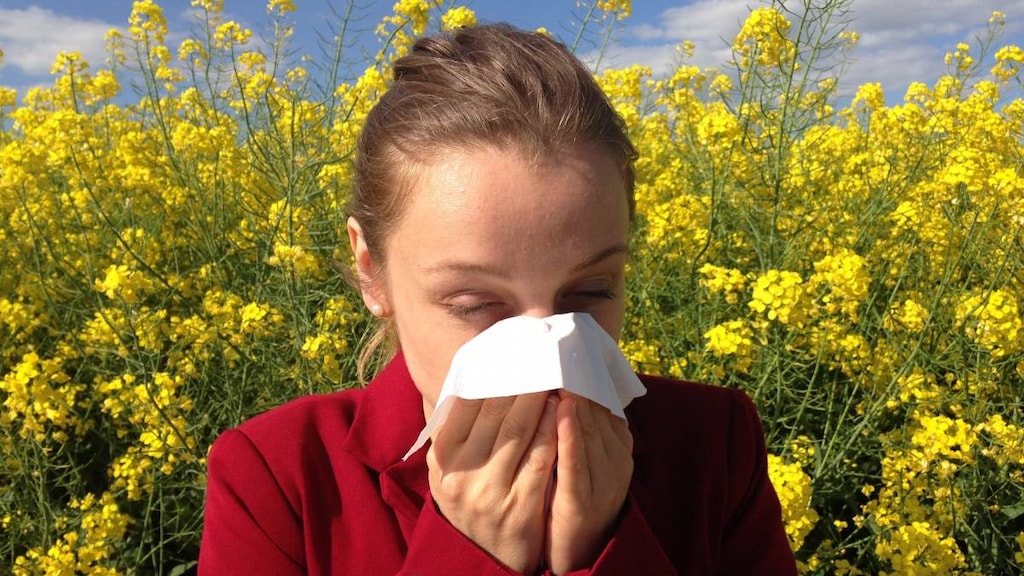Dosage Forms
Excipient information presented when available (limited, particularly for generics); consult specific product labeling. [DSC] = Discontinued product
Aerosol Solution, Nasal, as dipropionate:
Qnasl: 80 mcg/actuation (8.7 g [DSC], 10.6 g)
Qnasl Childrens: 40 mcg/actuation (4.9 g [DSC], 6.8 g)
Suspension, Nasal, as dipropionate:
Beconase AQ: 42 mcg/spray (25 g) [contains benzalkonium chloride]
Pharmacology
Mechanism of Action
Controls the rate of protein synthesis; depresses the migration of polymorphonuclear leukocytes, fibroblasts; reverses capillary permeability and lysosomal stabilization at the cellular level to prevent or control inflammation
Pharmacokinetics/Pharmacodynamics
Distribution
Beclomethasone dipropionate (BDP): 20 L; Beclomethasone-17-monopropionate (17-BMP): 424 L
Metabolism
BMP is a prodrug; undergoes rapid conversion to 17-BMP (major active metabolite) during absorption; followed by additional metabolism via CYP3A4 to other, less active metabolites (beclomethasone-21-monopropionate [21-BMP] and beclomethasone [BOH])
Excretion
Feces (60%); urine (<10% to 12%; as free and conjugated metabolites)
Onset of Action
Within a few days up to 2 weeks
Half-Life Elimination
BDP: 0.5 hours; 17-BMP: 2.7 hours
Protein Binding
BDP 87%; 17-BMP: 94% to 96%
Use: Labeled Indications
Nasal polyps Beconase AQ only: Prevention of recurrence of nasal polyps following surgical removal
Rhinitis:
Beconase AQ: Relief of symptoms of seasonal or perennial allergic rhinitis and nonallergic (vasomotor) rhinitis
Qnasl: Treatment of the nasal symptoms associated with seasonal or perennial allergic rhinitis in patients 4 years and older.
Use: Off Label
Acute bacterial rhinosinusitis, adjunct to antibiotics (empiric treatment) yes
Based on the Infectious Diseases Society of America (IDSA) guidelines for acute bacterial rhinosinusitis (ABRS) in children and adults and the American Academy of Otolaryngology-Head and Neck Surgery Foundation (AAO-HNS) guidelines for adult sinusitis, beclomethasone (nasal), among other intranasal corticosteroids, is effective and recommended as an adjunctive treatment to antibiotic therapy for the management of ABRS, primarily when a history of allergic rhinitis exists (according to IDSA guidelines).
Chronic Rhinosinusitisyes
Based on the American Academy of Otolaryngology-Head and Neck Surgery Foundation (AAO-HNS) guidelines for adult sinusitis, beclomethasone (nasal), among other intranasal corticosteroids, is effective and recommended (with or without nasal saline irrigation) for the symptomatic relief of chronic rhinosinusitis
Contraindications
Hypersensitivity to beclomethasone or any component of the formulation
Documentation of allergenic cross-reactivity for intranasal steroids is limited. However, the possibility of cross-sensitivity cannot be ruled out with certainty because of similarities in chemical structure and/or pharmacologic actions.
Canadian labeling: Additional contraindications (not in US labeling): Active or quiescent tuberculosis or untreated fungal, bacterial and viral infections.
Dosage and Administration
Dosing: Adult
Beconase AQ: Rhinitis, nasal polyps (postsurgical prophylaxis): Inhalation, nasal: One or two inhalations (42 or 84 mcg) in each nostril twice daily; total dose: 168 to 336 mcg daily; maximum dose: 336 mcg daily
Qnasl: Allergic rhinitis: Inhalation, nasal: Qnasl 80 mcg: Two inhalations (160 mcg) in each nostril once daily (maximum: 320 mcg daily)
Dosing: Geriatric
Refer to adult dosing.
Dosing: Pediatric
Note: Product formulations are not interchangeable: Beconase AQ: One spray delivers 42 mcg; Qnasl: One spray delivers 40 mcg or 80 mcg
Allergic rhinitis: Intranasal:
Beconase AQ (42 mcg/spray):
Children 6 to <12 years: Initial: 1 spray (42 mcg) per nostril twice daily (total dose: 168 mcg daily); if response inadequate, may increase to 2 sprays (84 mcg) per nostril twice daily (total dose: 336 mcg daily); once symptoms are adequately controlled, decrease dose to 1 spray (42 mcg) per nostril twice daily (total dose: 168 mcg daily).
Children ≥12 years and Adolescents: 1 or 2 sprays (42 mcg or 84 mcg) per nostril twice daily (total dose: 168 to 336 mcg daily); maximum daily dose: 336 mcg/day.
Qnasl:
Children 4 to <12 years: Qnasl 40 mcg: 1 spray (40 mcg) per nostril once daily (total dose: 80 mcg/day); maximum daily dose: 80 mcg/day.
Children ≥12 years and Adolescents: Qnasl 80 mcg: 2 sprays (160 mcg) per nostril once daily (total daily dose: 320 mcg/day); maximum daily dose: 320 mcg/day
Nasal airway obstruction/adenoidal hypertrophy: Limited data available; dosing regimens variable: Intranasal: Beconase AQ (42 mcg/spray): Children 5 to 12 years: Initial: 2 sprays (84 mcg) per nostril twice daily (total dose: 336 mcg daily) for 4 weeks, followed by 1 spray (42 mcg) per nostril twice daily (total dose: 168 mcg daily). Dosing based on a double-blind, placebo-controlled crossover study (n=17, age range: 5 to 11 years); results showed significant reduction in adenoid hypertrophy and related obstructive nasal symptoms following 4 weeks of beclomethasone therapy vs placebo (Demain 1995). Positive efficacy findings were also observed in a single-blind, placebo-controlled crossover study of 53 children (mean age: 3.8 ± 1.3 years) using a total daily dose of 400 mcg/day (200 mcg twice daily [using 50 mcg/spray formulation, not available in US]) delivered as 100 mcg (2 sprays) per nostril twice daily (Criscuoli 2003). Lower daily dosage (200 mcg/day) have not been found effective (Lepcha 2002).
Nasal polyps (postsurgical prophylaxis), vasomotor rhinitis: Intranasal: Beconase AQ (42 mcg/spray):
Children 6 to 12 years: Initial: 1 spray (42 mcg) per nostril twice daily (total dose: 168 mcg daily); if response inadequate, may increase to 2 sprays (84 mcg) per nostril twice daily (total dose: 336 mcg daily); once symptoms are adequately controlled, decrease dose to 1 spray (42 mcg) per nostril twice daily (total dose: 168 mcg daily).
Children and Adolescents ≥12 years: 1 or 2 sprays (42 mcg or 84 mcg) per nostril twice daily (total dose: 168 to 336 mcg daily); maximum daily dose: 336 mcg/day
Administration
Beconase AQ: Shake well prior to each use. Prior to initial use, prime pump 6 times (or until fine spray appears); repeat priming if product not used for ≥7 days. Spray in nostril(s); avoid spraying in eyes or mouth. Nasal applicator and dust cap may be washed in warm water and dry thoroughly.
Qnasl: Spray in nostril(s); avoid spraying in eyes or mouth. Note: A formulation requiring priming was distributed prior to January 2019. As of January 2019, a primeless formulation was made available. Confirm formulation being used to determine appropriate administration requirements.
Storage
Beconase AQ: Store between 15°C to 30°C (59°F to 86°F).
Qnasl: Store between 20°C and 25°C (68°F and 77°F), excursions permitted to 15°C to 30°C (59°F to 86°F). Do not puncture. Do not store near heat or open flame. Do not expose to temperatures higher than 49°C (120°F).
Drug Interactions
Desmopressin: Corticosteroids (Nasal) may enhance the hyponatremic effect of Desmopressin. Avoid combination
Esketamine: Corticosteroids (Nasal) may diminish the therapeutic effect of Esketamine. Management: Patients who require a nasal corticosteroid on an esketamine dosing day should administer the nasal corticosteroid at least 1 hour before esketamine. Consider therapy modification
Ritodrine: Corticosteroids may enhance the adverse/toxic effect of Ritodrine. Monitor therapy
Adverse Reactions
Frequency not always defined.
>10%: Respiratory: Nasopharyngitis (≤24%; children: 2%), epistaxis (2% to 11%)
1% to 10%:
Central nervous system: Dizziness (≤5%), headache (≤5%)
Endocrine & metabolic: Adrenal suppression (at high doses or in susceptible individuals), hypercorticoidism (at high doses or in susceptible individuals)
Gastrointestinal: Nausea (≤5%), oral candidiasis (rare; more likely with aqueous solution)
Immunologic: Immunosuppression
Neuromuscular & skeletal: Decreased linear skeletal growth rate
Ophthalmic: Intraocular pressure increased (5%), lacrimation (≤3%)
Respiratory: Sneezing (4%), upper respiratory tract infection (children: 3%), nasal congestion (≤3%), rhinorrhea (≤3%), nasal mucosa irritation (erosion) (≤1%), nasal candidiasis (rare; more likely with aqueous solution), pharyngeal candidiasis (rare; more likely with aqueous solution)
Miscellaneous: Fever (children: 3%), wound healing impairment
<1%, postmarketing, and/or case reports: Ageusia, altered sense of smell, anaphylactoid reaction, anaphylaxis, angioedema, anosmia, blurred vision, bronchospasm, burning sensation, cataract, chorioretinitis, dry nose, glaucoma, hypersensitivity reaction, nasal mucosa ulcer, nasal septum perforation, skin rash, unpleasant taste, urticaria, wheezing
Warnings/Precautions
Concerns related to adverse effects:
- Adrenal suppression: May cause hypercortisolism or suppression of hypothalamic-pituitary-adrenal (HPA) axis, particularly in younger children or in patients receiving high doses for prolonged periods. HPA axis suppression may lead to adrenal crisis. Withdrawal and discontinuation of a corticosteroid should be done slowly and carefully. Particular care is required when patients are transferred from systemic corticosteroids to inhaled products due to possible adrenal insufficiency or withdrawal from steroids, including an increase in allergic symptoms. Adult patients receiving >20 mg per day of prednisone (or equivalent) may be most susceptible. Fatalities have occurred due to adrenal insufficiency in asthmatic patients during and after transfer from systemic corticosteroids to aerosol steroids; aerosol steroids do not provide the systemic steroid needed to treat patients having trauma, surgery, or infections.
- Delayed wound healing: Avoid nasal corticosteroid use in patients with recent nasal septal ulcers, nasal surgery or nasal trauma until healing has occurred.
- Hypersensitivity reactions: Hypersensitivity reactions (including anaphylaxis, angioedema, rash, urticaria, and wheezing) have been reported; discontinue for severe reactions.
- Immunosuppression: Prolonged use of corticosteroids may increase the incidence of secondary infections, mask an acute infection (including fungal infections), prolong or exacerbate viral infections, or limit response to vaccines; avoid exposure to chickenpox and/or measles, especially if not immunized. Avoid use or use with caution in patients with latent/active tuberculosis, untreated bacterial or fungal infections (local or systemic), viral or parasitic infections, or ocular herpes simplex.
- Local nasal effects: Nasal septal perforation and localized Candida albicans infections of the nose and/or pharynx may occur. Nasal discomfort, epistaxis, and nasal ulceration may also occur; periodically examine nasal mucosa in patients on long-term therapy. Monitor patients for adverse nasal effects; discontinuation of therapy may be necessary if an infection occurs.
- Ocular disease: Increased intraocular pressure, open-angle glaucoma, and/or cataracts have occurred with intranasal corticosteroid use; use with caution in patients with a history of increased intraocular pressure, cataracts and/or glaucoma. Consider routine eye exams in chronic users or in patients who report visual changes.
Special populations:
- Pediatric: Avoid using higher than recommended dosages; suppression of linear growth (ie, reduction of growth velocity), reduced bone mineral density, or hypercortisolism (Cushing syndrome) may occur; titrate to lowest effective dose. Reduction in growth velocity may occur when corticosteroids are administered to pediatric patients, even at recommended doses via intranasal route (monitor growth).
Other warnings/precautions:
- Appropriate use: Rhinitis: Do not use in the presence of untreated localized infection involving the nasal mucosa. Do not continue use beyond 3 weeks in the absence of significant symptomatic improvement. Symptomatic relief may not occur for as long as 2 weeks.
- Appropriate use: Nasal polyps: Treatment may need to be continued for several weeks or more before a therapeutic result can be fully assessed. Treatment of nasal polyps with beclomethasone should be considered adjunctive therapy to surgical removal and/or the use of other medications that will permit effective penetration of beclomethasone into the nose. Recurrence can occur after stopping treatment.
Monitoring Parameters
Growth (adolescents and children); signs/symptoms of HPA axis suppression/adrenal insufficiency; ocular changes; signs/symptoms of Candida infection (long-term therapy)
Pregnancy
Pregnancy Considerations
Intranasal corticosteroids may be acceptable for the treatment of rhinitis during pregnancy when used at recommended doses (Lal 2016; Wallace 2008). Pregnant females adequately controlled on beclomethasone may continue therapy; if initiating treatment during pregnancy, use of an agent with more data in pregnant females and less systemic absorption may be preferred (Alhussien 2018; Namazy 2016; Wallace 2008).
Patient Education
What is this drug used for?
- It is used to keep nose polyps from coming back.
- It is used to ease allergy signs.
- It may be given to you for other reasons. Talk with the doctor.
Frequently reported side effects of this drug
- Headache
- Nose irritation
- Common cold symptoms
- Sore throat
Other side effects of this drug: Talk with your doctor right away if you have any of these signs of:
- Adrenal gland problems like severe nausea, vomiting, severe dizziness, passing out, muscle weakness, severe fatigue, mood changes, lack of appetite, or weight loss.
- Infection
- Nosebleed
- Nasal sores
- Wheezing
- Thrush
- Vision changes
- Signs of a significant reaction like wheezing; chest tightness; fever; itching; bad cough; blue skin color; seizures; or swelling of face, lips, tongue, or throat.
Note: This is not a comprehensive list of all side effects. Talk to your doctor if you have questions.
Consumer Information Use and Disclaimer: This information should not be used to decide whether or not to take this medicine or any other medicine. Only the healthcare provider has the knowledge and training to decide which medicines are right for a specific patient. This information does not endorse any medicine as safe, effective, or approved for treating any patient or health condition. This is only a brief summary of general information about this medicine. It does NOT include all information about the possible uses, directions, warnings, precautions, interactions, adverse effects, or risks that may apply to this medicine. This information is not specific medical advice and does not replace information you receive from the healthcare provider. You must talk with the healthcare provider for complete information about the risks and benefits of using this medicine.




